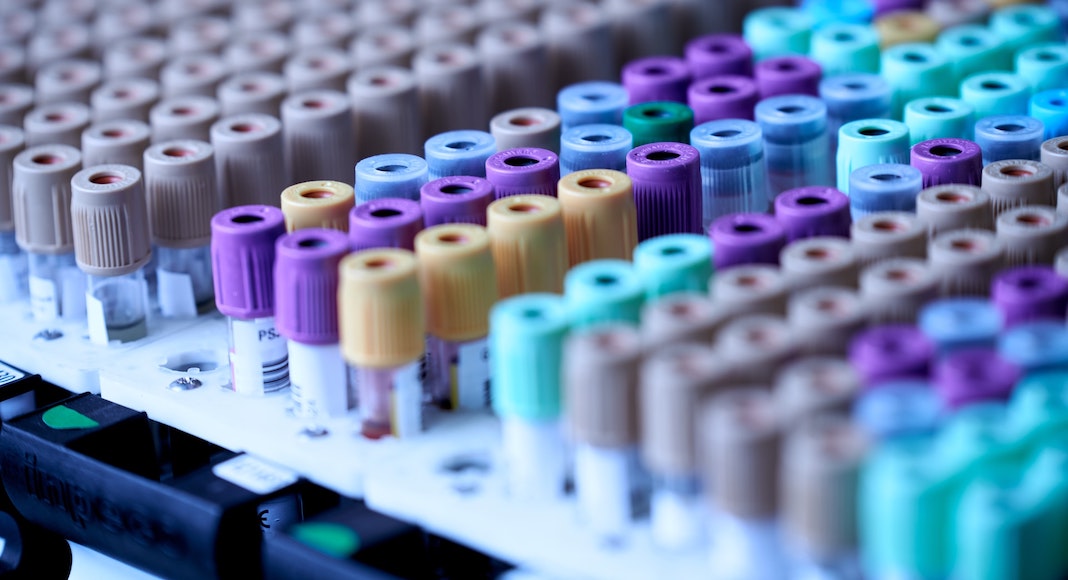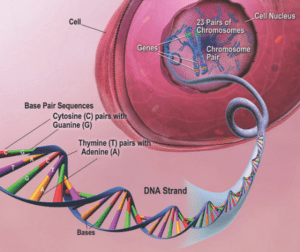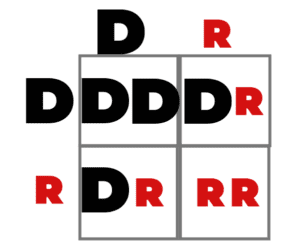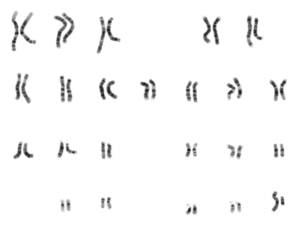For many moms-to-be, prenatal genetic testing may be entirely out of mind. These tests sound stressful, scary, or complicated. Let’s keep it real: sometimes it is. However, the reality is almost EVERY pregnancy will include some kind of prenatal genetic test, and the majority will be completely normal.
 Before I tried my hand at writing (#momjoke), I spent about a decade working in prenatal genetics. Here is my best attempt at a simple overview of the different genetic tests during pregnancy. But first, let’s set some ground rules:
Before I tried my hand at writing (#momjoke), I spent about a decade working in prenatal genetics. Here is my best attempt at a simple overview of the different genetic tests during pregnancy. But first, let’s set some ground rules:
- This is by no means a comprehensive guide to prenatal genetic testing. Biology, in general, is FULL of exceptions.
- If you have any concerns, talk to a genetic counselor. They are fantastic patient advocates with great explanations.
Prenatal Genetic Testing Biology Overview
Let’s revisit some concepts from my favorite high school class, Biology.
Chromosomes vs. Genes
In every cell of your body, you have an organelle called the nucleus which holds your entire genomic code known as DNA. Pretty trippy right?
All that DNA has to be organized to fit inside the nucleus, and it does this by supercoiling into highly compact chromosomes. Humans have 23 pairs of chromosomes (numbered 1-22 plus your sex chromosome).

Genes, on the other hand, are short segments of DNA which code for specific proteins and give you a particular trait. Essentially, chromosomes are enormous swaths of DNA with hundreds to thousands of different genes.
Dominant vs. Recessive
Each gene has potential, alternative forms referred to as alleles. Humans have two copies of each gene: one from mom and one from dad.
A dominant allele (D) is the expressed trait, even if we “carry” a copy of a recessive trait (r). For a specific gene, you can be:
-
- DD = Homozygous Dominant
- Dr = Heterozygous Dominant (sometimes called a carrier)
- rr = Homozygous recessive
To express a recessive condition, you must have both copies of the recessive allele (from both parents).
What Kinds of Prenatal Genetic Tests are There?
Recessive Carrier Panel
Here is why recessive traits matter; many parents have a recessive carrier panel before they conceive. These tests determine “carrier” status in parents for various recessive conditions.

If both parents are carriers for a specific gene, there is a 25% chance their offspring could have the trait or disease (rr.) A panel often tests for Cystic Fibrosis, Sickle Cell Anemia, Thalassemias, etc.
Preimplantation Genetic Diagnosis (PGD)
PGD is commonly used in IVF procedures. Once egg and sperm have met and divided (about five days) a couple cells are removed. These cells are tested to ensure embryos have the standard 46 chromosomes before they are implanted in the uterus. However, it is possible to check for gene-specific issues as well.
Noninvasive Prenatal Screening (NIPS)
NIPS is the newest and most game-changing technology. It’s a more accurate and noninvasive genetic screen. As the placenta grows, short fragments of DNA get into the mother’s bloodstream. A mom’s blood can be tested as early as nine weeks pregnant, and can be used to calculate risk for the most prevalent chromosome aneuploidies (a fancy word meaning ‘not 46’). Typically, NIPS will report on chromosomes 21, 18, 13, X & Y.
Nuchal Translucency Screen
At around twelve weeks gestation, most women have an ultrasound to examine the growing fetus’s anatomy. One of the most critical measurements is the amount of fluid at the base of the neck. This measurement, coupled with a test to look at hormone levels in the mother’s blood, screens for chromosomes 21, 18, 13, X & Y. It also looks for open neural tube defects (like Spinabifida) and potential fetal cardiac issues.
Chromosomes
Sometimes, a more invasive test is recommended to confirm a suspected diagnosis. NIPS and the NT Screen are only able to offer a risk factor. This is where we start to look at chromosomes and/or DNA directly from the pregnancy. However, this also means more invasive testing.
Chorionic villi sampling (CVS)
These are little branches of tissue which attach the placenta to the mother. Samples are typically collected between 9-13 weeks gestation.
Amniocentesis
The baby grows in a water-filled sac. It’s not really water, it’s amniotic fluid (which has cells with the baby’s DNA.) Once a pregnancy reaches about 16 weeks, a specialist can take a sample of the amniotic fluid for testing.
Fluorescent in situ hybridization (FISH)
FISH testing offers the fastest prenatal genetic testing turnaround time (typically a few days.) A probe is attached to specific areas of certain chromosomes (21, 18, 13, X & Y.) The lab treats the cells, then counts the number of chromosomes present. For example, if three signals are seen for chromosome 21, it indicates an additional chromosome 21 or Down Syndrome. If there are two signals for an X chromosome and none for a Y, it indicates a female (XX.)
Karyotype
In order to look at all chromosomes in a cell, we must first grow enough cells (a cell culture). It can take a week or more for cells from CVS of Amnio to grow (in an ideal situation). The lab then treats the cells with chemicals to visualize them. Each chromosome has a distinct banding pattern. Chromosomes are placed in a karyotype to look for the correct number, in addition to making sure all material is in the appropriate place.

Additional Prenatal Genetic Testing
There is an unlimited number of further tests which may be recommended based on your specific circumstances. Some of these could include:
-
- Microarray
- Gene-specific sequencing
- Cord Blood testing
- Exome or Whole Genome sequencing
Please keep in mind these genetic tests are VERY specific to your particular circumstance (and don’t forget to chat with a genetic counselor is you have ANY concerns!)



















I remember feeling a bit conflicted about a few genetic testing options when I was pregnant with my kids. I ended up deciding that I’d rather have more information as long as the options were non-invasive. Either way, I appreciate the nonjudgmental and information-heavy post you’ve written here!
Thanks Catherine. I’m in the same boat. Personally, I want AS MUCH INFO AS POSSIBLE. I’ve run my own recessive carrier panel on myself and my husband (before we even decided to get married), cultured both of our chromosomes, and run my own microarray…However, that’s probably more a consequence of being a biology nerd than being all that concerned for my own health.
I was nervous about all the tests when I was pregnant. This is very well explained, and I would have loved to see this article when I was pregnant!
Thanks Rebecca. I know lots of fellow moms (especially when we’re pregnant) can feel really overwhelmed by all the choices and what they mean.
This is super interesting. I don’t have children so I had no idea that they could test for so many things!
Comments are closed.